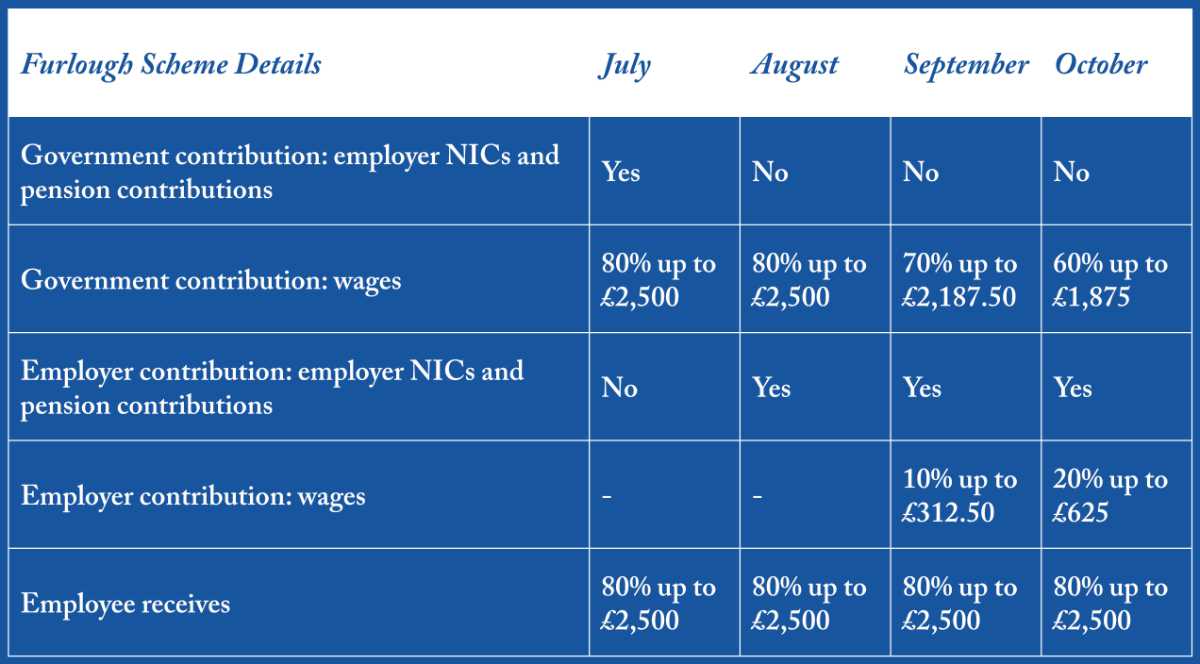Flexible Furlough
Now that lockdown has been eased and the furlough scheme is starting to wind down, we look at whether employees are now reluctant to return for fear of the unknown and how it is going to be managed by employers
Are employees ready to return and what to do if you face resistance?
We know that the furlough scheme will extend to the end of October, with employers starting to share some of the cost of the scheme from August. The advice remains that those who can work from home should continue to do so, but for others the tide towards a return to the workplace is gathering pace. Understandably some employees are reluctant and are putting up resistance, many citing the availability of the furlough scheme as a reason not to return.
Whilst anxiety may in itself be a reasonable consideration in deciding who to and who not to unfurlough the ultimate decision is the employers to make. Some employees have made the point that while furlough is still available, that is where they ought to be. This is not a valid reason if the employer needs to re-open and if homeworking isn’t reasonably possible.
So what can employers do to help employees return to work safely?
Before planning a return strategy, companies should read the government guidance for safely working during the pandemic (https://www.gov.uk/guidance/working-safely-during-coronavirus-covid-19) or our simple guide to safe working on our Coronavirus Coverage Page. There are many practical steps that can easily be taken to reduce the risk of infection, these will vary by industry and geography, there is no ‘one size fits all’.
The three things to consider as employers are;
- Is there work to be done?
- Is it safe to be working back in the office / factory etc
- Undertake a risk assessment
- Set up safe systems of work, informed by the risk assessment
- Implement the safe systems of work . Keep the systems of work under review
- Look at the objections – Look at the objections from the employee and listen to what they are telling you. Look to work with them (not against) to come up with a suitable situation for both parties.
- Sickness / Health reason – Hold a welfare meeting with the employee to get to the bottom of the issues. If possible, do an OH referral.
- Childcare issues – We would advise holding a welfare meeting to discuss whether it might be advisable to reduce employees hours or work flexibly when the kids are in bed, if this is possible.
Communication is key
With all the above, it is key to discuss the options and ask staff for their own safety suggestions and act on these – showing a willingness to listen and take action helps develop a culture of participation and reduces anxiety.
Employers may decide on a particular strategy for unfurloughing e.g. bringing back the most experienced first – but they should always be prepared to make exceptions to the rule.
By understanding each staff member’s particular circumstances an employer will be better placed to make a decision on whether to unfurlough a particular worker.
Disciplinaries
If an employee continues to refuse to return to work and you, as the employer, have acted reasonably and put everything in place, you could look to move down the disciplinary route but we would advise this as a last resort.
Other alternatives
We would advise less combative strategies to apply pressure to employees to return such as:
- Requiring employees to take their paid holiday to keep themselves on furlough leave
- Agreeing a period of unpaid leave
- Consideration of a temporary alternative role to allow a return to work
Furlough scheme info
A few clients have asked to confirm the changes that are taking place between now and October so a quick summary is below as a reminder.

Cover photo courtesy Sonnie Hiles via Unsplash
Additional Reading
Annual Leave Crisis
Almost a third or UK workers cancelled annual leave in 2020 leaving employers…
Creepy Callers…
Despite the positive intent for the service, there are many examples of personal…
Contact Info
Registered Office
Sefton Yodaiken & Co
Fairways House
George Street
Prestwich
Manchester
M25 9WS
